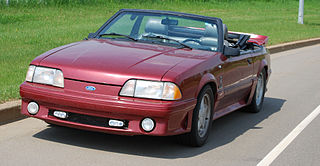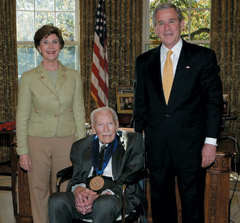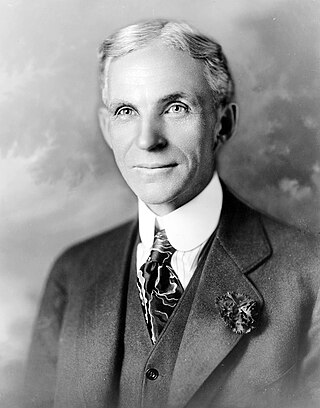
Sid Ramnarace is a Canadian-born American designer [1] and strategist who has worked with the Ford Motor Company, in Dearborn, Michigan, United States, and has designed automobiles, furniture, jewelry, textiles, glassware, and home decor. [2] [3]

Sid Ramnarace is a Canadian-born American designer [1] and strategist who has worked with the Ford Motor Company, in Dearborn, Michigan, United States, and has designed automobiles, furniture, jewelry, textiles, glassware, and home decor. [2] [3]
At the age of 12, he submitted letters to Chuck Jordan at General Motors and Jack Telnack at Ford in the hope of receiving advice to landing a job as a designer. [4] Based on the reply from those letters, Ramnarace studied at the Cleveland Institute of Art, where he graduated with a degree in industrial design, studying under the tutelage of design pioneer, Viktor Schreckengost.

After a brief stint at General Motors as a contract designer, Ramnarace began at Ford working at Ford's Global Design Center and developed textiles, color and trim for the Ford Explorer, Ford Prodigy [5] and 24.7 show car concepts, [6] where he worked under VP of Design J Mays and Chief Designer Laurens van den Acker.
He has contributed to automobile interiors and exteriors including the Ford Edge and Lincoln MKX, Ford Flex, Ford Thunderbird [7] and most notably, the 5th generation Ford Mustang which was cited as one of the most iconic cars of the last 20 years. [8]
Sid has also spent time teaching at his alma mater as well as appearing as a guest speaker at the University of Michigan Ross School of Business at the MBA in Marketing program. [9]
The clean design of the 24.7 featured simple geometric shapes and machined surfaces which were designed to communicate a technical look and feel, complimenting the prescient advanced communication and telematic technologies that made up the essence of 24.7. However, the design of the 24.7 was criticized in the press - The Car Connection was quoted saying, "It's wrapped around the Internet because the Internet is trendy, and in the design-led world Ford is entering under J Mays guidance, trendy is everything." [10]
Lincoln Motor Company, or simply Lincoln, is the luxury vehicle division of American automobile manufacturer Ford. Marketed among the top luxury vehicle brands in the United States, Lincoln was positioned closely against its General Motors counterpart Cadillac. The division helped to establish the personal luxury car segment with the 1940 Lincoln Continental.

The Ford Mustang is a series of American automobiles manufactured by Ford. In continuous production since 1964, the Mustang is currently the longest-produced Ford car nameplate. Currently in its sixth generation, it is the fifth-best selling Ford car nameplate. The namesake of the "pony car" automobile segment, the Mustang was developed as a highly styled line of sporty coupes and convertibles derived from existing model lines, initially distinguished by "long hood, short deck" proportions.

Mercury is a defunct division of the American automobile manufacturer Ford Motor Company. Created in 1938 by Edsel Ford, Mercury served as the medium-price brand of Ford for nearly its entire existence, bridging the price gap between the Ford and Lincoln model lines. Competing against Buick and Oldsmobile from General Motors for decades, the brand also competed against Chrysler's namesake brand.

The Ford Thunderbird is a personal luxury car produced by Ford from model years 1955 until 1997 and 2002 until 2005 across 11 distinct generations. Introduced as a two-seat convertible, the Thunderbird was produced in a variety of body configurations. These included a four-seat hardtop coupe, four-seat convertible, five-seat convertible and hardtop, four-door pillared hardtop sedan, six-passenger hardtop coupe, and five-passenger pillared coupe, with the final generation designed again as a two-seat convertible.

Personal luxury car is a North American car classification describing somewhat sporty, sophisticated mass-market coupés that emphasized comfort over performance. The North American manufacturers most often combined engineering, design, and marketing to develop upscale, distinctive "platform sharing" models that became highly profitable.

Mercury Cougar is a nameplate applied to a diverse series of automobiles sold by the Mercury division of Ford from 1967 to 1997 and from 1999 to 2002. While the nameplate is most commonly associated with two-door coupes, at various times during its production, the Cougar was also marketed as a convertible, four-door sedan, station wagon, and hatchback.

The Ford Fox platform is an automobile platform that was used by Ford Motor Company. Introduced for compact sedans in the 1978 model year, the Fox architecture was utilized for a wide variety of configurations for Ford and Lincoln-Mercury vehicles. In its original form, the platform was used through the 1993 model year; a substantial redesign of the Ford Mustang extended its life into the 21st century, ending production in 2004. Produced across 26 model years, the Fox platform is the second-longest car architecture ever designed by Ford Motor Company.

Automotive design is the process of developing the appearance of motor vehicles - including automobiles, motorcycles, trucks, buses, coaches, and vans.
George W. Walker was an American industrial and automotive designer. His most notable work was the original Ford Thunderbird.
Joseph E. Oros Jr. was an automobile stylist for Ford Motor Company over a period of 21 years — known as the Chief Designer of the team at Ford that styled the original Mustang, and for his contributions to the 1955 Ford Thunderbird. Oros was also an artist, sculptor, painter and industrial designer, having designed appliances and other products.
Jack Telnack is the former global Vice President of Design of the Ford Motor Company from 1980 to 1997. He is best known for his work with cars like the 1979 Ford Mustang, the 1983 Ford Thunderbird, and the 1986 Ford Taurus that ushered in a new era of aerodynamic design to America's mainstream marketplace.

The Cyclone engine, also branded Duratec, is Ford Motor Company's latest DOHC family of gasoline V6 engines introduced in 2006. The Cyclone succeeds Ford's previous V6 engine families, including the Canadian built Ford Essex engine introduced in 1981, the Ford Vulcan engine introduced in 1985, the original Duratec V6 introduced in 1993, and the Ford Cologne V6 engine, whose design dates back to 1962. The first version of the Cyclone engine, a 3.5 L V6, appeared in the 2007 Ford Edge and the Lincoln-badged luxury variant, the Lincoln MKX, as well as the Lincoln MKZ. Mazda badges its versions of the Cyclone MZI as it did with its versions of the Duratec V6.
The Continental Mark series is a series of personal luxury cars that was produced by Ford Motor Company. The nomenclature came into use with the Continental Mark II for 1956, which was a successor to the Lincoln Continental of 1939–1948. Following the discontinuation of the Mark II, Ford continued the use of the Mark series on Continental branded vehicles from 1958 to 1960. Following a hiatus, Lincoln-Mercury relaunched the Continental Mark series during 1968 and would produce six successive generations through the 1998 model year.

Viktor Schreckengost was an American industrial designer as well as a teacher, sculptor, and artist. His wide-ranging work included noted pottery designs, industrial design, bicycle design and seminal research on radar feedback. Schreckengost's peers included designers Raymond Loewy, Norman Bel Geddes, Eva Zeisel, and Russel Wright.

The Lincoln MKR concept car was a premium 4-door fastback sedan design, as introduced during the 2007 North American International Auto Show by Lincoln. Its chassis was based on the Ford D2C platform as used in the Ford Mustang. The MKR signaled the next-generation of premium Lincoln vehicles, introducing the new TwinForce engine family and a restyled "bow wave" waterfall grill. The concept car was first unveiled to the media and the public in a press release on 1 January 2007.

A continental tire or a continental kit is an upright externally-mounted spare tire located behind an automobile's trunk, made popular by the Continental Mark Series, which carried a simulated continental tire until 1998.

The Ford Motor Company is an American automaker, the world's fifth largest based on worldwide vehicle sales. Based in Dearborn, Michigan, a suburb of Detroit, it was founded by Henry Ford on June 16, 1903. Ford Motor Company would go on to become one of the largest and most profitable companies in the world, as well as being one of the few to survive the Great Depression. The largest family-controlled company in the world, the Ford Motor Company has been in continuous family control for over 110 years. Ford now encompasses two brands: Ford and Lincoln. Ford once owned 5 other luxury brands: Volvo, Land Rover, Jaguar, Aston Martin, and Mercury. Over time, those brands were sold to other companies and Mercury was discontinued.

The fifth-generation Ford Mustang (S197) is a pony car that was manufactured by Ford from 2004 until 2014, at the Flat Rock Assembly Plant in Flat Rock, Michigan. The fifth generation began with the 2005 model year, and received a facelift for the 2010 model year. Originally designed by Sid Ramnarace through late 2001 and finalized in mid-2002, the fifth-generation Mustang's design was previewed by two pre production concept cars that debuted at the 2003 North American International Auto Show. Development began on the S-197 program in 1999 under chief engineer Hau Thai-Tang, shortly after the 1998 launch of "New Edge" SN-95 facelift. From the second half of 1999, design work commenced under Ford design chief, J Mays, and concluded in July 2002 with the design freeze. There have been several variants of the fifth-generation Ford Mustang that include the Mustang GT/California Special, Shelby Mustang, Bullitt Mustang, and Boss 302 Mustang.

The first generation of the Ford Thunderbird is a two-seat convertible produced by Ford for the 1955 to 1957 model year, the first 2-seat Ford since 1938. It was developed in response to the 1953 Motorama display at the New York Auto Show, which showed the Chevrolet Corvette. The Corvette in turn was developed in response to the popularity of European sports cars among Americans.

The eighth generation of the Ford Thunderbird is a personal luxury coupe that was manufactured and marketed by Ford from the 1980 to 1982 model years. Introduced to commemorate the 25th year of the Thunderbird, the eighth generation was substantially downsized, transitioning further into the mid-size segment. For a second generation, the Thunderbird remained the Ford counterpart of the Mercury Cougar XR7; while the Cougar again served as a complete line of mid-sized cars in various body styles, the Thunderbird was offered solely as a two-door personal luxury coupe.